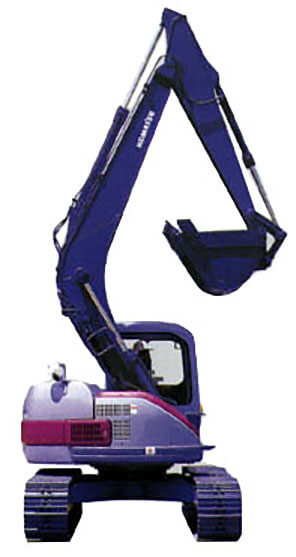1990
While equipment built to accommodate urban environments, by generating less noise, vibrations and emission, became more common, super sized equipment that could withstand harsh working conditions in places like giant mines were also developed.

For a mini size, tight quarter types were becoming more prominent, but this was the first one introduced to the 12-ton class. In addition to it's capability at small work sites, it offered operation as easy as a standard model and increased steadiness. It was this model that earned tight quarter types credibility in the industry.
Weight: 12700kg, Bucket capacity: 0.45m3
Hydraulic excavator
Since its first emergence in 1951, it took only 50 years for the hydraulic shovel to establish its primary position on construction sites worldwide. Its size ranges from mini to super size depending on the scale of construction, and during the half century, it kept evolving by achieving a minimum rear-swing radius and adapting styles that would work with characteristics of each site. Mirroring the movement of a human hand, a hydraulic shovel will continue to evolve during the 21st century.